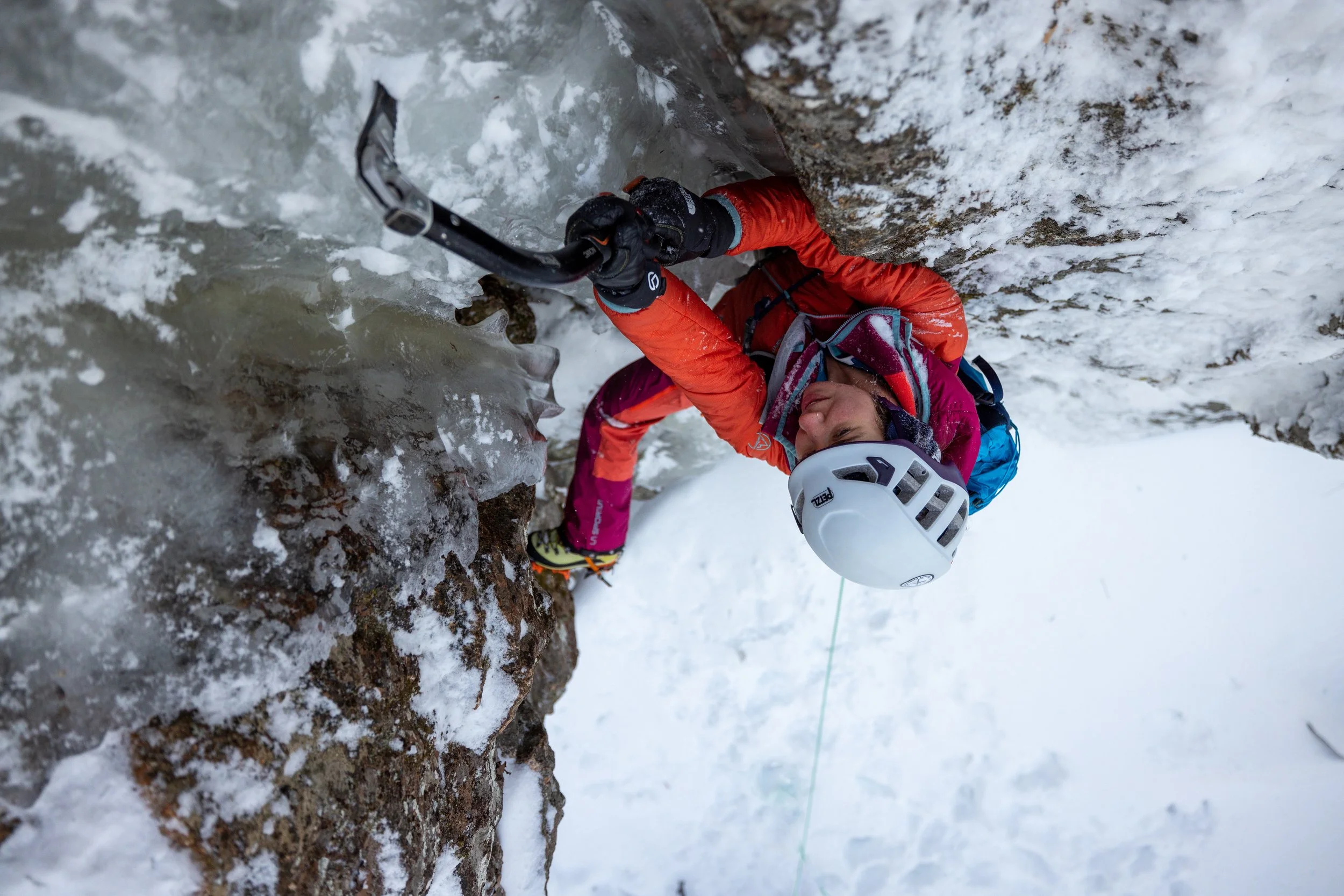Last year, I took my first step into the realm of professional guiding by signing up for an AMGA Single Pitch Instructor course with Fox Mountain Guides. Having years of rock climbing experience on more than just single pitch terrain, I didn’t know how much more there could be to learn in that setting. Apparently a lot, and the learning certainly didn’t stop at the end of that course. Armed with a brand new SPI manual and a lot of new tricks to work on, I left the course planning to practice until I mastered all of it. It became clear very quickly that learning and growing at these skills on my own was going to be much harder than just memorizing a book, and I struggled to find people to work with on my areas of weakness. If you only climb with people at your level of knowledge of lower, you’re not getting the feedback you need and you can’t reach for a higher standard if you don’t even know what that looks like.
This May, Fox Mountain Guides provided me with a key mentor-ship opportunity and I was able to shadow Karsten (FMG owner and guide) and Doug (FMG Rock Instructor) while they guided a group at the Red River Gorge in Kentucky for a few days. This experience was pivotal for me, and I was finally able to see what a professionally guided day looked like and what my role could look like as an instructor. Interacting with real clients and seeing them progress over the course of a short trip was rewarding and really brought everything I’d been learning together in a meaningful way. Observing and participating in the high standard that Fox Mountain Guides practices gave me valuable insight into my own strengths and weaknesses, and the experience motivated me to continue my education and transition from recreational climber to professional climbing guide. Mentor-ship can spark positive growth in a way that no amount of reading or practicing can, and I’m excited to continue down this path after having such positive learning experiences with FMG.
–Peggy
Ways to find mentor-ship:
-Take internships with AMGA accredited companies
-Get on the AMGA professional members forum and mentor-ship forum on Facebook
-Go to the AMGA conference
-hire a guide or instructor and create a mutually beneficial relationship
Remember when searching for mentor-ship be thinking about what you can do for your mentor. Can you provide them with a service like photos or some volunteer time. Help them with some office duties where you might even learn more about that side of the business. When the relationship becomes mutually beneficial both parties win and our profession grows stronger!
































